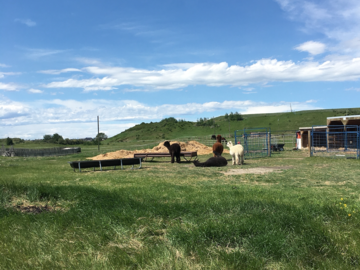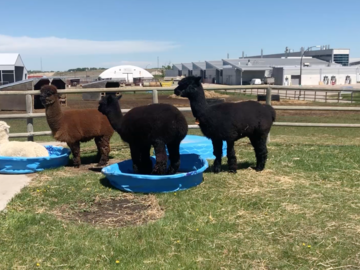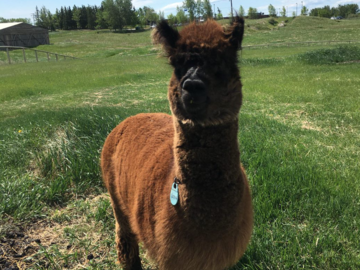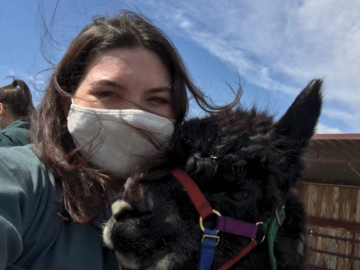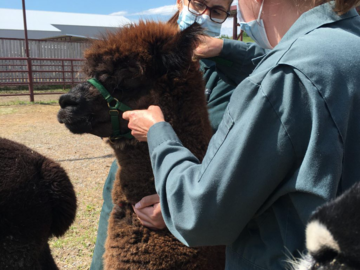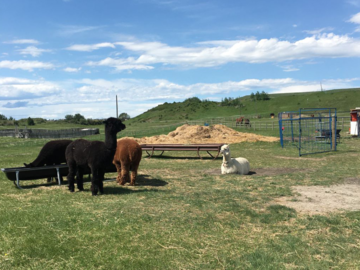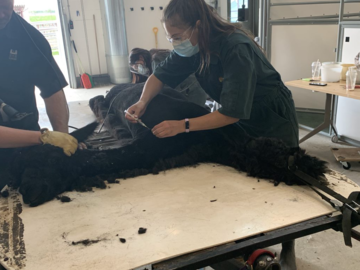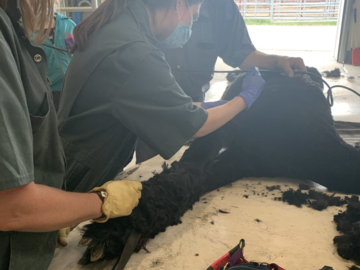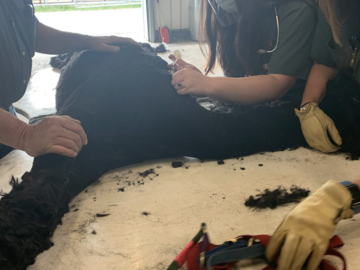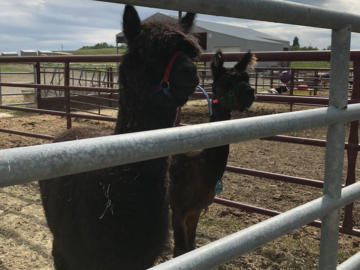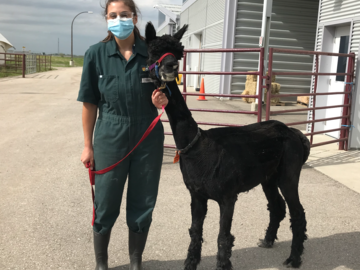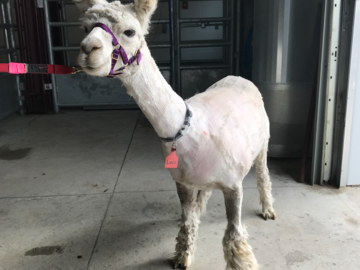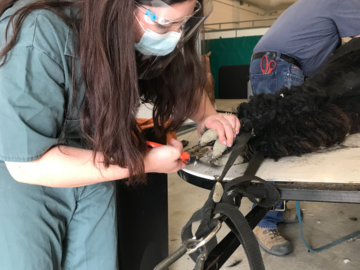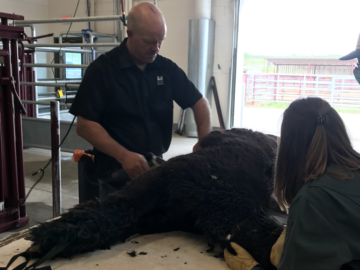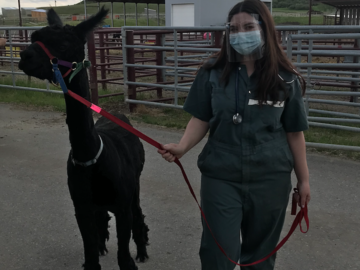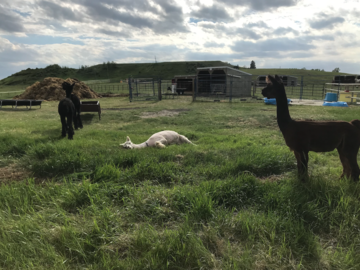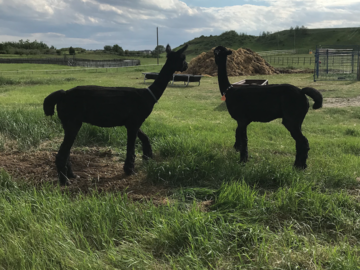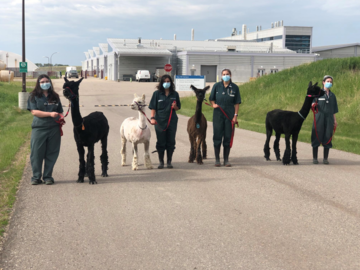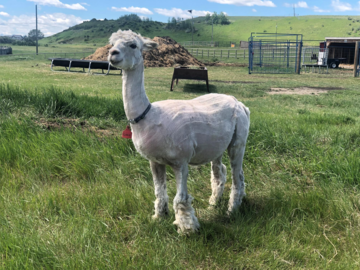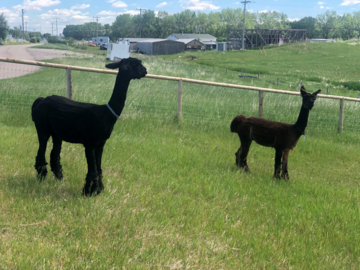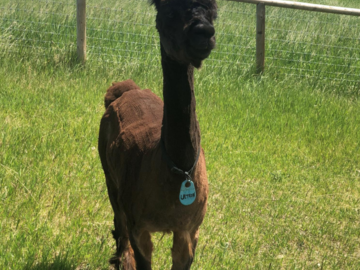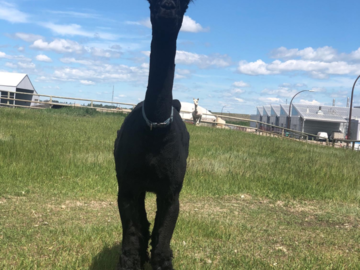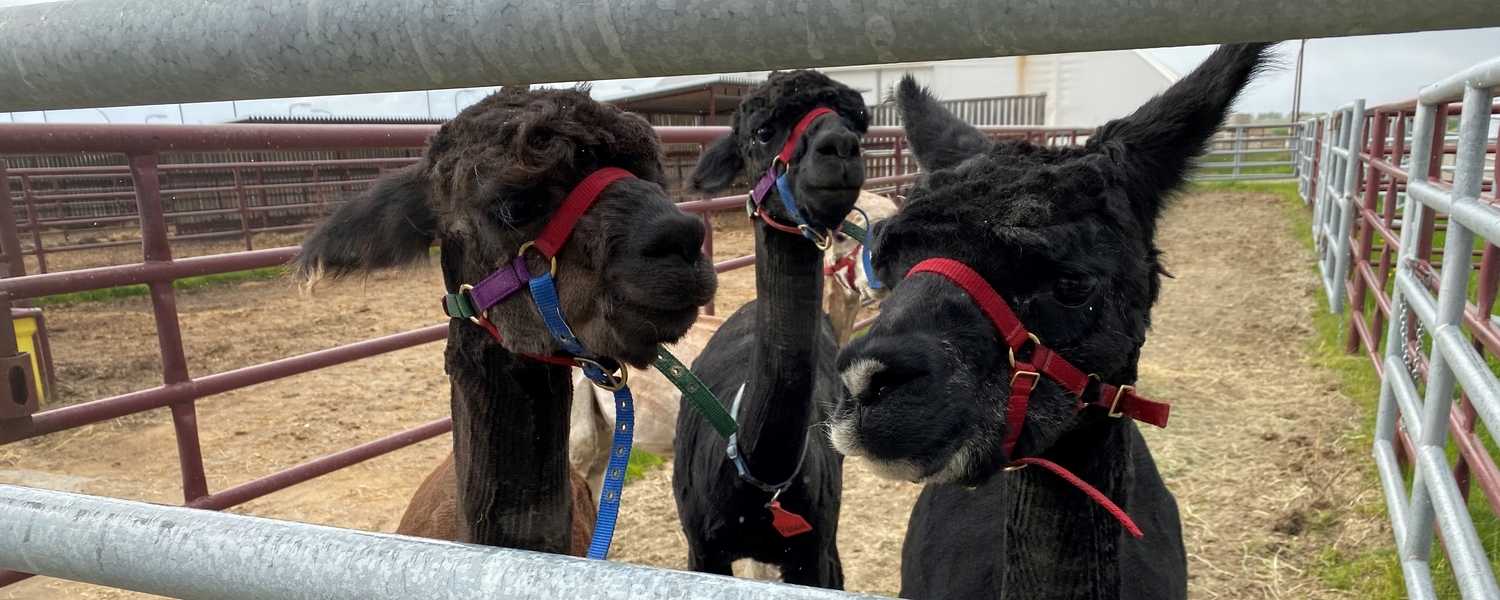
Alpacas
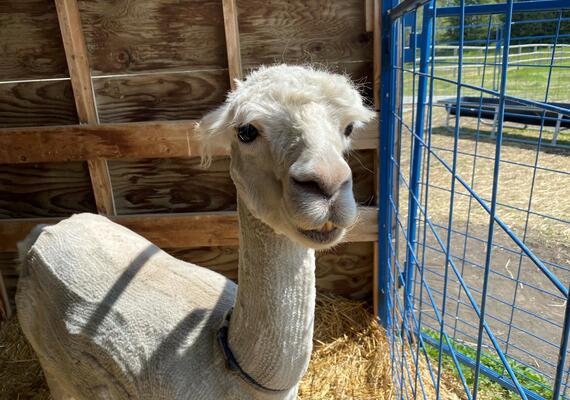
At UCVM we were extremely fortunate to have a small herd of alpacas that have since been adopted out!
Many individuals own alpacas in Alberta, so we want to make sure that our students have experience working with them prior to graduation. Alpacas are fairly easy to work with and not difficult to care for. They are very quirky and have funny personalities. Although we no longer house alpacas at CSB, we will still have the opportunity to work with them when they are brought in for our clinical skills labs. We hope you enjoy watching these videos to learn more about this unique species!
Meet our Alpaca Herd
**DISCLAIMER: The alpacas in this video are no longer at UCVM and have been adopted out.
Alpacas are herd animals so it is important that they are not housed alone, as this can result in unneeded stress on the animals. At the UCVM we used to have an alpaca herd of four alpacas all with a distinct personality. This video shows the alpaca Jake before he passed away, among 4 other alpacas that were a part our wonderful teaching herd. It was the highlight of many veterinarians, technicians, and students’ days to work with the alpaca herd and we are positive their new owners feel the same!
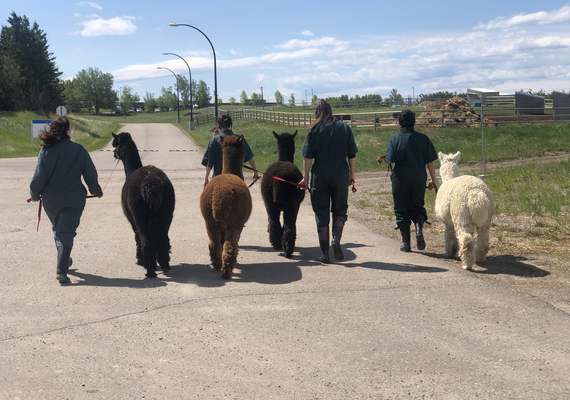
History of Camelids
Alpacas belong to the biological family Camelidae along with llamas, camels, guanacos, and vicuñas. Camels are considered old world camelids, while llamas, alpacas, guanacos, and vicuñas, are considered new world camelids.
Alpacas are originally from South America. Alpacas are smaller than llamas, and often calmer. They are often used for their valuable fiber, which can be found in 22 different colors, and made into fine pieces of clothing. They are also used for their meat but now they are more popular as pets. There are two breeds of alpacas. These breeds are called Suri and Haucaya, the later being the most popular breed.
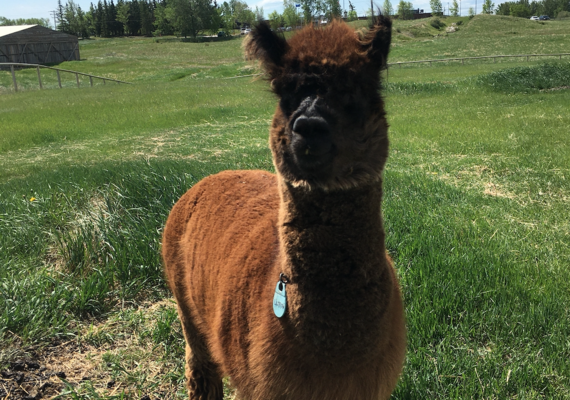
Camelid Terms
Cria - young alpaca or llama
Criating - birthing of a cria
Hembra - female camelid
Macho - male camelid used for breeding
Cush - a camelid resting position laying down on its chest and abdomen with its legs bent under its body
Fiber - the wool/fleece of a camelid
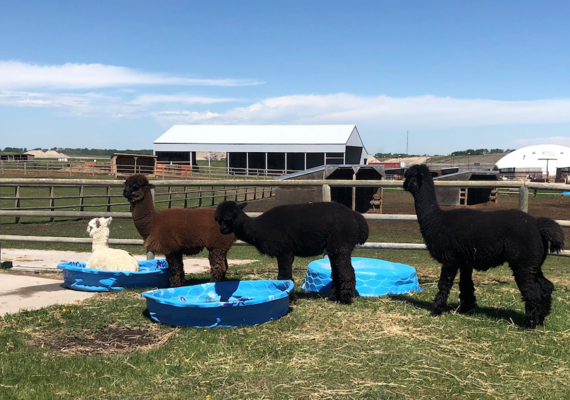
Alpaca Behaviour
We can relate some of the behaviours of alpacas to cats! Like cats, instead of urinating and defecating in random areas, a herd of alpacas all use the same spot as the bathroom. In the pastures they are kept, you will find large communal piles of feces!
Similar to cats, alpacas urinate behind them, not infront. This also means that like cats, they are prone to their urinary passages becoming blocked.
In terms of handling, alpacas are like cats because they too like to be handled on their own terms. They can be skittish and sassy!
Their cush position also looks similar to a cat laying on its belly with its legs tucked in!
Alpaca Facts
Watch this video to learn more facts about alpacas!
Alpaca Herding
Alpaca herding is an important skill, as it is necessary for catching and haltering an alpaca. Alpacas are very clever so when herding them, you want to make sure you do not give them an escape route or they will take it. Herding is assisted by using herding sticks (wands), ropes, and the outstretched arms of the herder. By using these tools, the distance between the herder and the animal is increased so the animals feel less threatened. This allows for a low stress handling environment. The flight zone and point of balance principles that you learned during bovine interactions are not only important for moving/herding cattle but can also be used to move/herd alpacas!
Alpaca Haltering
Alpaca haltering is an important skill as this allows you to lead the animal in a safe and controlled way that is also low stress to the animal. When placing a halter on the nose of an alpaca it is critical to make sure the nose band is high on the snout of the alpaca. This is critical to not restrict the cartilaginous nasal pathway and restrict the breathing of the alpacas. Alpacas, like horses, can only breathe through their nose, so restricting this can have dire consequences.
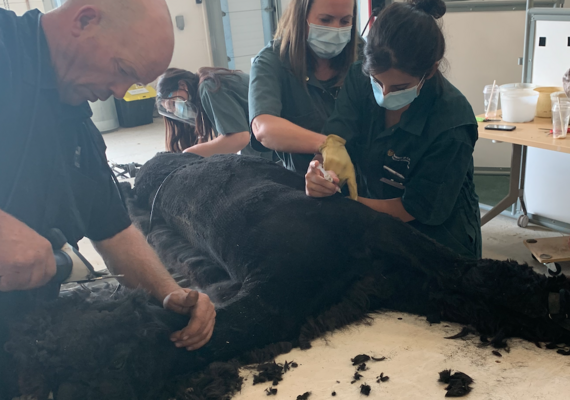
Caring for Alpacas
In previous summers, us summer students used to assist our staff at UCVM with the care of the alpaca herd. This included shearing them, trimming their nails, and vaccinating them!
In order to aid this process, we would restrain the alpacas on a special table called a tilt table. The table is able to tilt from side to side, allowing the alpaca to be standing beside the table, be strapped onto it, and then flipped on its side. The table also has ropes that we can use to restrain their feet and stretch out their legs. This helps them remain still while being processed! Once we are done processing one side of the alpaca, we gently flip them onto their other side!
The image on the right shows former students simultaneously shearing, trimming nails, and vaccinating the alpaca Reggie!
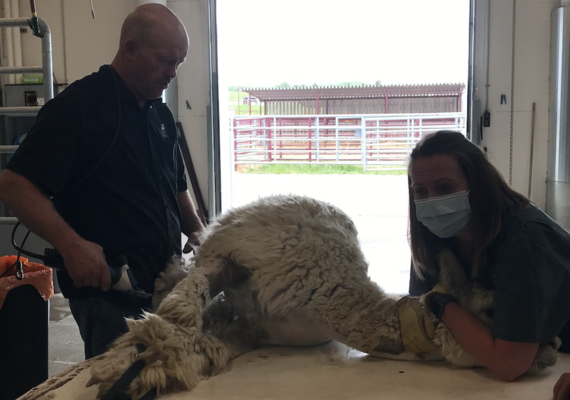
Can you think of any reasons why we shear alpacas in the summer?
Alpacas are usually sheared in the summer to remove their dense and insulating fiber in order to ensure they are cool for the warm summer weather. Shearing them in the beginning of the summer also gives them the opportunity to grow back nice warm fiber before the start of winter!
Shearing the alpacas also gives us an opportunity to harvest their fiber. The shearers collect the good quality fiber, clean it, turn it into thread, and create beautiful pieces of clothing from it!
The image on the left shows one of our former alpacas Luco being sheared!

